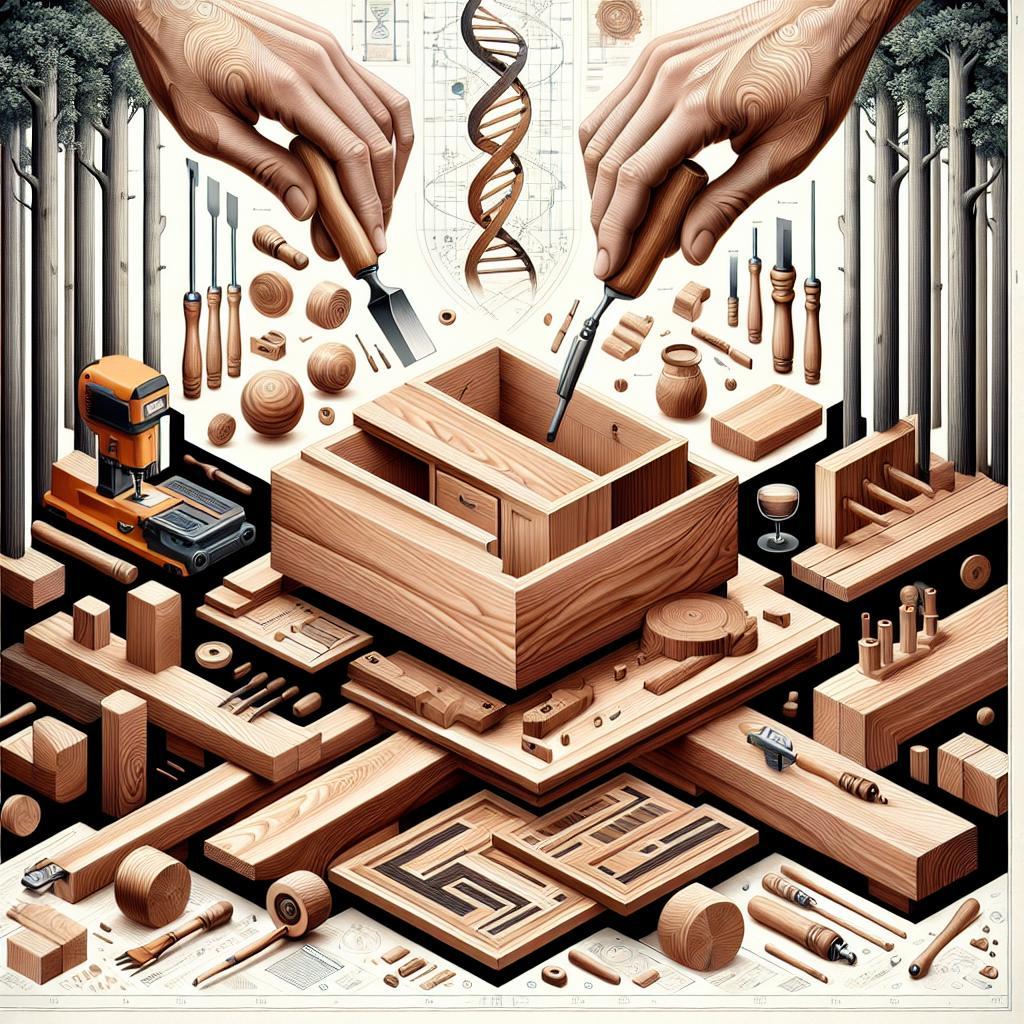Building Bathroom Cabinets: A Craftsmanship Journey for Every Home
In the heart of every home lies a sanctuary, a space that reflects our personal style and provides a sense of tranquility amid daily chaos: the bathroom. Often overlooked, this essential room is not only a place of utility but also an opportunity for creativity, especially when it comes to storage solutions. Enter the world of bathroom cabinets—a perfect blend of functionality and aesthetic appeal. Building your own bathroom cabinets allows for customization to suit your unique space and taste, transforming off-the-shelf solutions into a tailored masterpiece. In this article, we will explore the art of crafting bathroom cabinets, offering practical tips, design inspiration, and a deeper understanding of materials and techniques. Whether you’re a seasoned DIY enthusiast or a curious beginner, join us on this journey to elevate your bathroom with personalized cabinetry that marries form and function.
Choosing the Right Materials for Durable Bathroom Cabinets
When it comes to constructing bathroom cabinets, selecting robust materials is paramount for ensuring longevity and functionality. The high humidity and varying temperatures typically found in bathrooms make certain materials more suitable than others. Plywood is often recommended due to its moisture resistance and structural integrity. Alternatively, MDF (medium-density fiberboard) can be a cost-effective option but should always be laminated or painted with moisture-resistant finishes to enhance its durability.
Furthermore, the choice of hardware and finishes also plays a significant role in the overall durability of your cabinets. Opting for stainless steel hinges and drawer slides can significantly improve resistance against rust and corrosion, providing a longer lifespan. When considering cabinet finishes, laminate is an excellent choice for a protective and easy-to-clean surface, while painted finishes can offer both aesthetics and resilience when applied properly. Below is a quick comparison of materials to guide your decision:
| Material | Pros | Cons |
|---|---|---|
| Plywood | Water-resistant, sturdy | More expensive |
| MDF | Cost-effective, smooth surface | Less durable without finishing |
| Laminate | Easy to clean, scratch-resistant | Can chip if not cared for |

Designing for Functionality: Maximizing Storage Space
Creating bathroom cabinets that prioritize functionality involves thoughtful design choices that enhance your overall storage space. Start by considering the vertical space in your bathroom; leveraging tall cabinets can draw the eye upward and maximize unused areas. By incorporating shelves that are adjustable, you allow for greater flexibility to accommodate various items, from toiletries to towels. Additionally, built-in compartments can help organize your essentials, ensuring that everything has its designated place. Here are some effective strategies to implement:
- Pull-out drawers: Ideal for storing smaller items, these can be installed within existing cabinets to improve accessibility.
- Open shelving: This provides easy access to commonly used items while keeping your bathroom feeling airy.
- Corner cabinets: Utilize those awkward spaces efficiently by installing corner units that offer additional storage without compromising on style.
When designing your cabinets, consider integrating multiple functionalities into single units. For instance, a cabinet with a built-in laundry hamper can save precious floor space while keeping the area tidy. Below is a simple table showcasing potential multifunctional cabinet designs:
| Cabinet Type | Functionality |
|---|---|
| Vanity Cabinet | Storage plus countertop for grooming |
| Mirror Cabinet | Reflective surface with hidden storage |
| Step Stool Cabinets | Storage unit that doubles as a step stool |

Finishing Touches: Hardware and Aesthetics to Elevate Your Cabinets
When it comes to giving your bathroom cabinets a fresh and polished look, choosing the right hardware makes all the difference. From knobs and pulls to hinges and sliders, hardware pieces not only serve practical functions but also add character and style to your cabinetry. Consider selecting materials that resonate with the overall theme of your bathroom, such as stainless steel for a modern vibe or oil-rubbed bronze for a touch of vintage charm. Additionally, don’t underestimate the impact of finishes—matte, polished, or brushed can each create distinct atmospheres. A cohesive hardware selection can transform simple cabinets into standout features of your bathroom.
To further enhance the aesthetics of your cabinets, think about incorporating decorative elements that reflect your personal style. Adding features like soft-close mechanisms, contemporary edge banding, or custom trim details can elevate the overall design while improving functionality. You can also opt for paint colors or stains that harmonize with your bathroom’s palette. An eye-catching table of options might help you visualize what combinations work best:
| Style | Hardware Finish | Color Options |
|---|---|---|
| Modern | Brushed Nickel | White, Gray, Navy |
| Rustic | Oil-Rubbed Bronze | Walnut, Cream, Olive |
| Classic | Polished Chrome | Soft Blue, Sage, Beige |

Installation Tips and Tricks for a Seamless Fit
Achieving a flawless installation of your bathroom cabinets hinges on preparation and the right techniques. Before you start, ensure you have all necessary tools at hand, such as a level, drill, and measuring tape. Proper measurements are crucial; be meticulous about checking the height, width, and depth of your available space. To avoid future headaches, take extra care to inspect your walls for any irregularities or plumbing that might interfere with the cabinet placement. A quick patch-up with wall filler can prevent surprises mid-installation.
When it comes to fitting your cabinets, consider using a shim for any inconsistencies in your flooring. This not only stabilizes your cabinets but also enhances their longevity. Make sure to secure the cabinets to each other and the wall; this step is vital for overall stability. Additionally, if you‘re uncertain about the coordination of colors and finishes, create a simple comparison table:
| Material | Finish | Texture |
|---|---|---|
| Wood | Glossy | Smooth |
| Laminate | Matte | Textured |
| Metal | Satin | Brushed |
This guide gives you a clearer perspective on how various materials and finishes will interact in your space, fostering a harmonious aesthetic. By following these tips, you can enjoy a stress-free installation process and beautiful, functional bathroom cabinets that perfectly fit your home.
Q&A
Q&A: Building Bathroom Cabinets
Q1: What materials are best for building bathroom cabinets?
A1: When embarking on a bathroom cabinet project, consider moisture-resistant materials such as plywood, MDF (medium-density fiberboard), or marine-grade plywood. These options can withstand the humidity typically found in bathrooms. For finishes, opt for water-resistant paints or veneers that can provide an additional level of protection while enhancing the cabinet’s aesthetic appeal.
Q2: How do I determine the right size for my bathroom cabinets?
A2: Start by measuring your bathroom space, paying attention to the height, width, and depth of the area where you plan to install the cabinets. Consider the height of your vanity, any existing plumbing, and how much storage you need. A good rule of thumb is to leave at least 24 inches of clearance for ease of use. Sketching a layout can help you visualize the best dimensions for functionality and aesthetics.
Q3: Is it necessary to use hardware for bathroom cabinets?
A3: While hardware like handles and knobs is not mandatory, they are essential for functionality and can enhance the visual appeal of your cabinets. Choose finishes that complement the overall design of your bathroom, whether it’s sleek and modern or vintage and ornate. Eco-friendly hardware options are also available, allowing you to express personal style while being conscious of sustainability.
Q4: What finishing techniques can I use for a professional look?
A4: To achieve a polished finish, consider techniques such as sanding, priming, and applying multiple coats of paint or stain. For an especially smooth finish, use a paint sprayer. Don’t forget the importance of sealing the surface to protect it from moisture and humidity. Experimenting with different techniques, like distressing or glazing, can add character and uniqueness to your cabinets.
Q5: Can I build bathroom cabinets if I have limited woodworking experience?
A5: Absolutely! Many beginner-friendly plans are available that guide you through the process step-by-step. Start with simpler designs, practice basic woodworking techniques, and don’t hesitate to ask for help or consult online resources and workshops. Building your own cabinets not only provides a sense of accomplishment but also allows for customization that perfectly fits your space.
Q6: What are the most common design styles for bathroom cabinets?
A6: Bathroom cabinets come in an array of designs to suit various aesthetics. Popular styles include traditional, characterized by rich woods and intricate detailing; modern, featuring sleek lines and minimalistic designs; and farmhouse, showcasing rustic materials and finishes. The style you choose should harmonize with the overall decor of your bathroom, creating a cohesive and inviting atmosphere.
Q7: What storage features can I incorporate into my bathroom cabinets?
A7: Consider adding features like pull-out shelves, lazy Susans, or built-in organizers to maximize storage and accessibility. Dividers can help categorize smaller items, while deeper drawers can store larger products. Don’t forget vertical space; tall cabinets or open shelving can save floor space while providing ample storage. Think creatively about how you can customize your cabinets to suit your specific needs!
Q8: What is the best way to maintain my bathroom cabinets after installation?
A8: Regular maintenance is key to the longevity of your bathroom cabinets. Wipe them down with a damp cloth to remove dust and water splashes, and avoid harsh chemicals that might damage the finish. For wooden cabinets, occasional polishing or oiling can keep them looking fresh. Check for any signs of wear or damage and address them promptly to prevent further issues.
Q9: Are there any eco-friendly options for materials and finishes?
A9: Yes! Look for sustainable materials like bamboo, reclaimed wood, or FSC-certified lumber, which ensures responsible forestry practices. For finishes, there are VOC-free paints and stains that are less harmful to indoor air quality. Choosing eco-friendly options not only benefits the environment but can also add a unique and natural touch to your bathroom cabinetry!
Q10: What resources are available if I need further guidance on building bathroom cabinets?
A10: Numerous resources can guide you in your cabinet building journey. DIY blogs, woodworking forums, instructional YouTube videos, and home improvement workshops are great places to start. Consider purchasing woodworking plans or eBooks for more detailed instructions. Engaging with online communities can also provide valuable tips and inspiration from other hobbyists and professionals alike.
—
This Q&A section aims to illuminate the process of building bathroom cabinets while fostering creative approaches and practical considerations. Happy building!
The Conclusion
building your own bathroom cabinets can be a rewarding project that marries functionality with creativity. By investing time and effort into this endeavor, you not only enhance the aesthetics of your space but also increase its storage capabilities and value. From choosing the right materials to mastering essential woodworking techniques, each step brings you closer to a personalized haven that reflects your style. As you embark on this journey, remember that patience and attention to detail are your best allies. Whether you’re a seasoned DIY enthusiast or a novice eager to learn, the satisfaction of crafting custom cabinetry tailored to your needs is a pursuit well worth undertaking. With the right tools and a dash of inspiration, you’ll transform your vision into a stunning reality—one that can bring joy and utility for years to come. Happy building!

